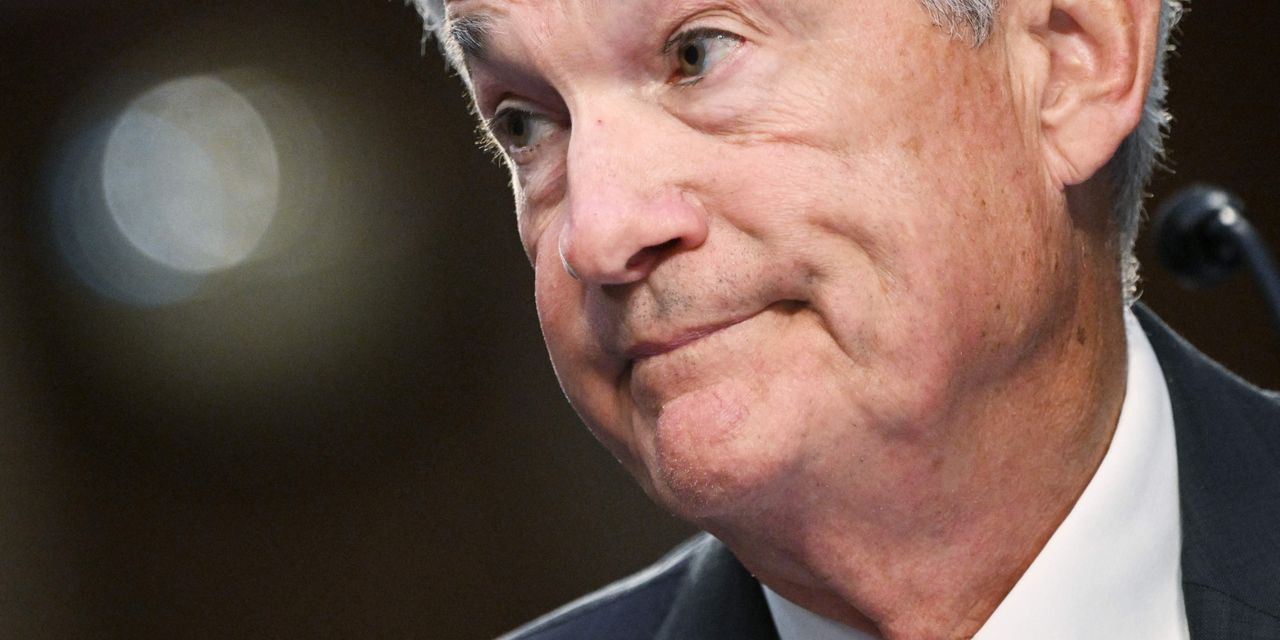Federal Reserve Chair Jerome Powell on Thursday offered up reasons for the continued surge in long-term Treasury yields, and may have unintentionally egged on traders to keep pushing them higher, according to a top Fed watcher.
Asked about the sharp rise in long-term Treasury yields — with the 10-year Treasury note on Thursday coming within less than a basis point of the psychologically important 5% threshold, Powell said the rise didn’t appear to be fueled by expectations for higher inflation or further Fed rate hikes.
“It’s really happening in term premiums, which is the compensation for holding long-term securities, and not principally a function of the market looking at near term fund rates,” Powell said during the question-and-answer session following his speech to the Economic Club of New York.
In One Chart: Here’s a chart on one of the biggest factors behind rising yields this week
That’s the sort of rise that tightens financial conditions, which Powell acknowledged could potentially substitute for further Fed hikes “at the margin,” noted Krishna Guha, head of the global policy and central-bank strategy team at Evercore ISI, in a note.
But Powell’s comments “lacked any urgency to lean against the rise in yields,” Guha said.
Indeed, Powell described bond market volatility as something the Fed should let “play out.”
That set the stage for a renewed steepening of the yield curve, with longer-dated rates rising more than those at the short end, Guha said. The yield on the 10-year Treasury note
BX:TMUBMUSD10Y
came within less than a basis point of the 5% threshold in afternoon action, before ending North American trade up 8.5 basis points at 4.987% — its highest since July 20, 2007, according to Dow Jones Market Data.
“We do not think Powell intends to green light a further yield move higher, but we worry the bullish growth/hands off tone on yields may mean this is how his remarks are interpreted,” Guha wrote.
See: Why stock-market investors are fixated on 5% as 10-year Treasury yield nears key threshold
The rise in yields was blamed for sinking stocks, with the Dow Jones Industrial Average
DJIA
ending the day down more than 250 points, or 0.7%, while the S&P 500
SPX
declined 0.8% and the Nasdaq Composite
COMP
lost 0.9%.
Powell, meanwhile, acknowledged other possible yield drivers, including the resilience of the economy, which could lead investors to expect a longer stretch of high rates; concerns about rising fiscal deficits; and the Fed’s unwinding of its balance sheet, a process known as quantitative tightening, or QT. He noted that observers have also cited the changing correlation between bonds and equities, in which more supply shocks make fixed-income a less attractive hedge to equities.
“So all of those are possible ideas,” Powell said.
One possible explanation that Powell rejected had been offered earlier by Minneapolis Fed President Neel Kashkari.
Kashkari suggested that if the recent move in the 10-year yield was a reflection of a change in expectations regarding monetary policy, “then we might actually need to follow through on their expectations in order to maintain those yields.”
“Is it just because the market expects us to take further action to tighten monetary policy? That doesn’t seem to be the case,” Powell said.
“It doesn’t seem to be principally about expectations of us doing more,” he added.
—Greg Robb contributed.
Read the full article here













Leave a Reply